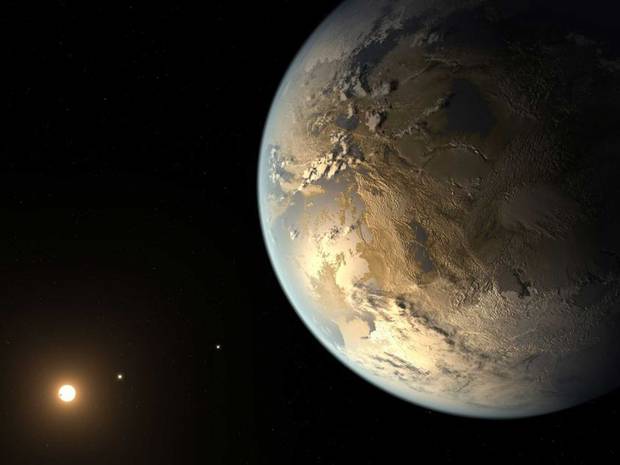
The good news? Now we have a habitable Minshara-class planet to which to expand Human civilization. The bad news? It's 8.243 quadrillion miles away:
[NASA] announced last Thursday that after twenty years of searching the universe its Kepler project had found, for the first time, an Earth-like planet orbiting a star like our own Sun at a similar distance.
The discovery of the new exo-planet Kepler-452b, 60% larger than Earth, made international headlines and raised hopes Humans may not be alone in the cosmos....
No, that's not the hope it raised. Think "real estate" and you'll be getting warmer.
But, what are the chances of anyone from Earth - or even an unmanned space probe - ever reaching Kepler-452b to discover if it has the Earth-like rocks, oceans, atmosphere....that the Kepler project scientists suspect it may have?
Even at the maximum warp velocity of an Intrepid-class starship - warp 9.975 - the journey would take approximately just over two months. At warp 1 (c), 1,400 years. At the speed of the fastest spacecraft currently launched from this planet, New Horizons, approximately 227 million years, or about one galactic rotation. Talk about leading the target.
How much would you be willing to bet that Trump has already staked a claim and is listing it already?

No comments:
Post a Comment